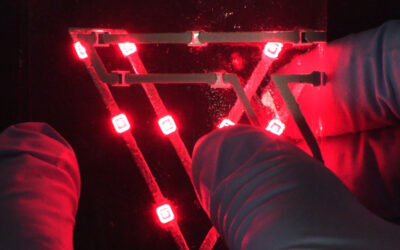Organic field-effect transistors (OFETs) use voltage to control the flow of current in an electronic circuit. The channel connecting the source and drain is, in this case, made of an organic semiconductor. Improvements in performance of OFETs, in particular their field-effect mobility, have seen them surpass amorphous silicon-based devices, which has enabled progress in the development of new technologies based on flexible electronics.
Being able to predict the properties of a working device during its design phase is crucial to the commercially viable, large-scale production of electronics. On a more fundamental level, OFETs are often used to explore the properties of organic semiconductors, meaning that they are also critical research tools.
But the further development of such devices is limited by our understanding of their working principles. Currently, theoretical work on organic devices borrows concepts based on the operation of inorganic devices, which is logically suboptimal and can therefore only be of limited accuracy when applied to organics.
To this end, a 3D Monte Carlo model has been developed by a group from KAUST which establishes a clear relation between the macroscopic current characteristics and microscopic charge transport specifically in micrometer-sized organic FETs. Their simulations are well-matched to experimental data and allow them to comment on the relevance of the gradual channel approximation, the impact of channel thickness, and the nature of microscopic charge transport in OFETs.
Check out their new algorithm in Advanced Functional Materials.

















